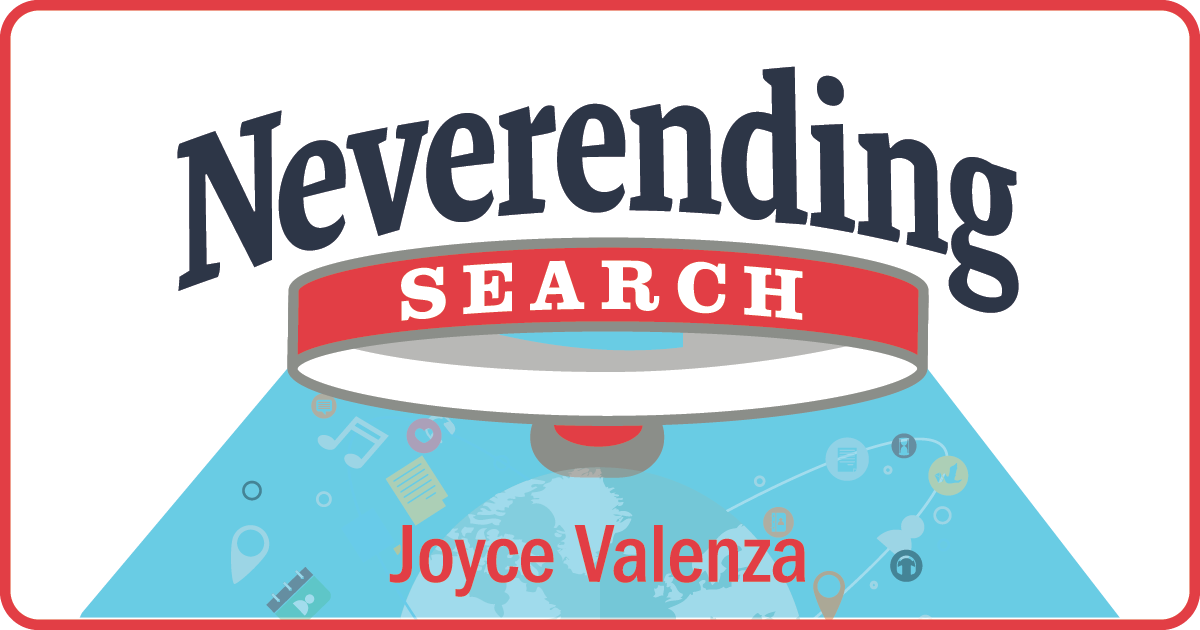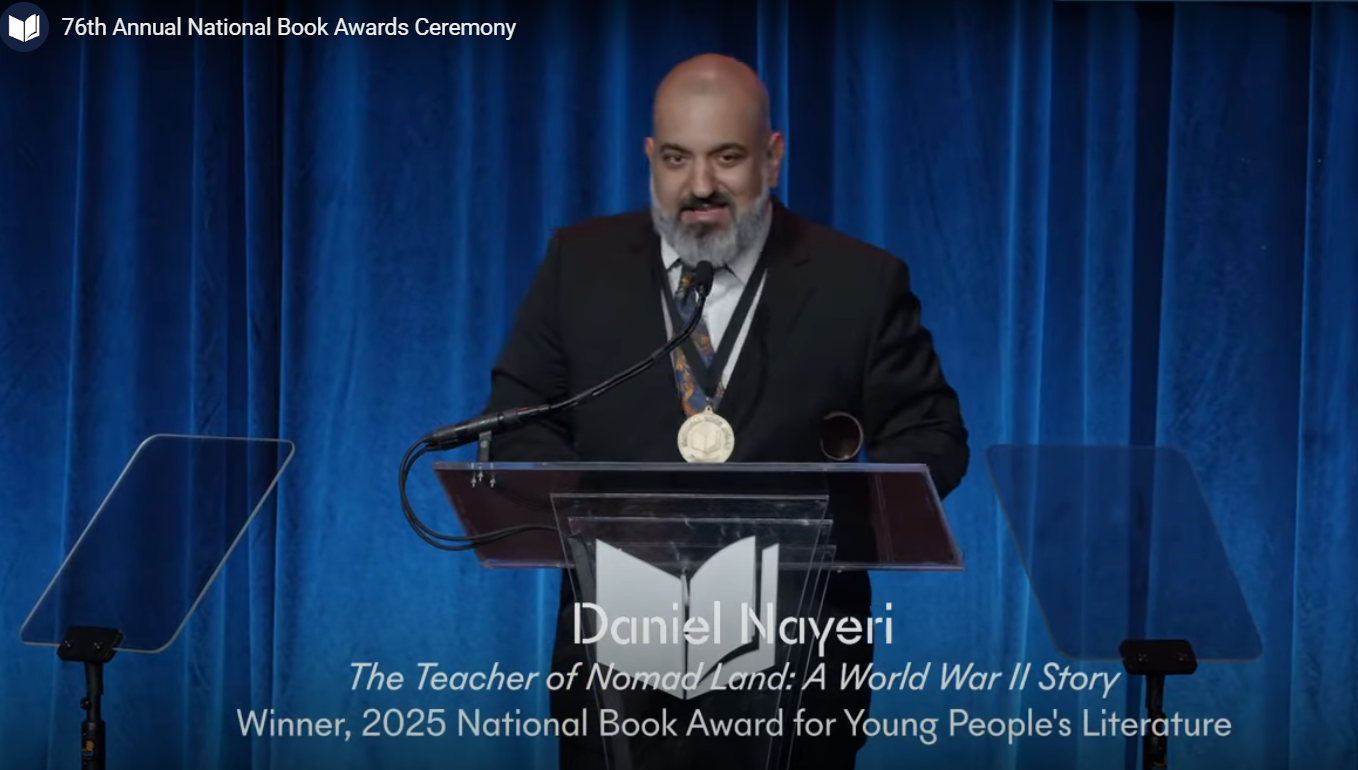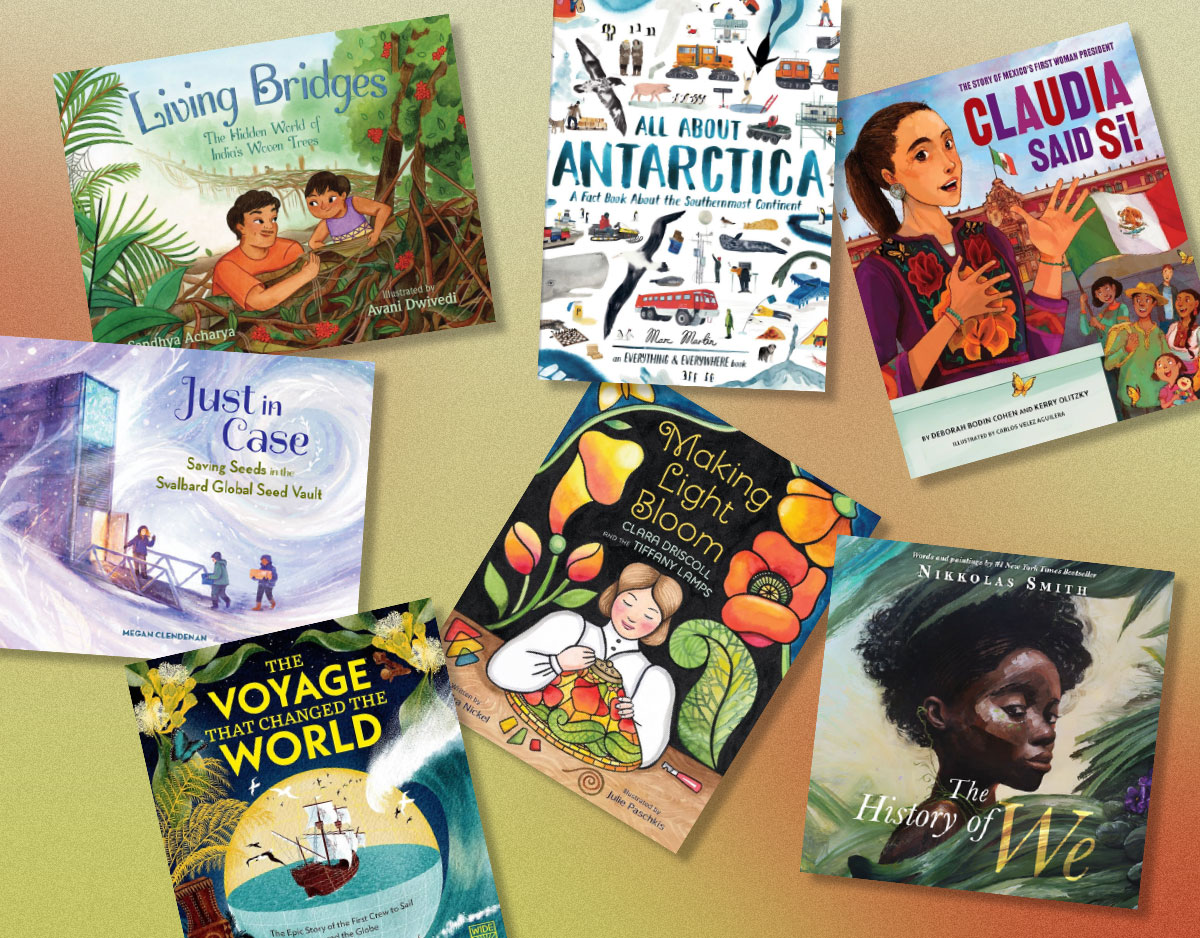SCROLL DOWN TO READ THE POST
On (animated) leadership, with a focus on geese, our SLJ Panel
“When the best leader’s work is done, the people say, “We did it ourselves.”
Lau Tzu
We decided to switch up the panel Both Sides Now: Librarians Discuss Leadership at the SLJ Summit this week by seeking inspiration from the animal kingdom.
Doug Johnson, KC Boyd, and Michelle Colte joined me in selecting animal behaviors worthy of mimicking and we asked the audience to contribute as well (See the Padlets below).
I chose the goose.
Why a goose? (Apologies to Groucho and the gang). It’s because geese tell a story about synergy—they demonstrate the creation of a whole that is greater than the simple sum of its parts.
In the Spring, you see geese heading North for the Summer. You see them flying South for Winter in Fall
Wendy Stephens tells me, geese are mean. But she agrees they are also brave and like roaches, they have grit, they thrive and adapt anywhere. They take care of each other.
We’ve got a cabin near a lake and that’s a place these little guys are not very welcome.
However when I see geese, I see well beyond their lakefront “legacies.”
I see leadership culture in action. I see the characteristics Mark Edwards spoke about- capacity building, sustainability, endurance, energy, orchestration. directional nurturance and initiative.
As geese take flight you can hear them squawking to each other. If you spoke goose, you might know, it’s a kind of networked communication. Perhaps, like tweets, their conversation (in goose) is encouraging, informative, directional and sharing.
Before you know it they form a line, and that line arches and bends and then, as if on cue, that line forms a sharp and perfect V. The V formation geese follow is iconic of leadership.
Why a V? (with more apologies to Groucho)
It’s about flight efficiency—it makes no sense to fly alone. A flock can fly faster and maintain flight longer than one goose on her own.
 As each bird flaps its wings, it creates uplift for the bird immediately following. Birds behind have the aerodynamic advantage of lift, drafting, or the reduction of wind resistance.
As each bird flaps its wings, it creates uplift for the bird immediately following. Birds behind have the aerodynamic advantage of lift, drafting, or the reduction of wind resistance.
The lead goose sets the direction, but leadership fluctuates through the entire journey. Older, stronger, more experienced geese lead the V.
Younger, weaker geese are protected, flying “in the wings” until it is their turn to lead the “V” at a future date.
The lead goose expends the most energy. Leadership is tiring.
When the lead goose gets tired, he falls back into the wing of the V and another goose voluntarily flies up and takes the lead at its point.
If a goose is injured, she leaves the formation and others fly out to protect her. They later rejoin their group or create a new formation
There are some leadership lessons to learn. So allow me to translate from the original goose.
Lesso n 1: Take advantage of the birds flying ahead of you. If you feel drag and resistance in formation you will take advantage of the lifting power of the bird immediately in front. We are flying in the same direction. Check out their vision the vantage points of others. Read their blogs. Watch how they choose to fly. Learn from the other birds at this conference.
n 1: Take advantage of the birds flying ahead of you. If you feel drag and resistance in formation you will take advantage of the lifting power of the bird immediately in front. We are flying in the same direction. Check out their vision the vantage points of others. Read their blogs. Watch how they choose to fly. Learn from the other birds at this conference.
Lesson 2: We have to take turns doing the hard jobs, the leadership jobs. Offer to fly up and help your colleagues, local and national organizations–even if you are new in your school, even if you are new to the field.
It’s not about explicit power, the assumption of the lead position is implicit. Volunteer. Fly up to the point. Watch for signs of fatigue and offer to fly up. No one is going to fly back to tap you on the wing; you should know when it is time. Leadership is connected to professional commitment, as well as your passion, your knowledge of the challenges and the opportunities facing our profession.
Lesson 3: Honk, blog or tweet from behind to encourage those up front and to amplify the vision.
To temporarily move out of the goose story: Sometimes it is important to be the second dancer. When your admin at school appears to be the lone nut, but you know that he or she knows the direction, even though she may look crazy, like that first concert dancer, get up and be the first follower. Join the dance!
ADVERTISEMENT
ADVERTISEMENT
Try to quack for the others. Mentor. Blog. Tweet. Promote the names of others, especially those just getting started. Adopt them at your tables today.
Lesson 4: Show your students what professional leadership looks like. They may not see it as clearly from all their other teachers. Every time you hit the start button, every time you fly up to the point, you show learners a collateral curriculum. Learning is lifewide. They need to see models of professional behavior in multiple field or group activities.
Lesson 5: It makes no sense to fly alone. It’s not efficient. Take advantage of the power of this flock. When I look at the birds here I see talent, capacity and ability to soar. In fact, I see a profession poised to soar. We are connected. We have common direction and vision, we are traveling on the thrust of one another. We have new tools with which to collaborate.
We have LM_NET, TLChat and TLChat Live, TLNewsNight, SLJ, Follett EdWeb, AASL, SIG_MS and the Learning Revolution webinars. We have our new Global TL. Please check out and contribute to Craig Seasholes’ new resurgence map. Soon, I will be starting a library Innovations map.
Lesson 5.5: If leadership is not shared, it is not real leadership. When we unite in our leadership. We build capacity. Everyone in our flock is important. Fly smart. It makes no sense to fly alone.
(Note: I am hoping to share the other panelist’s comments here as I receive them.)
And a shout-out Maryland biology teacher Dr. Robert McNeish, to whom some of these lessons from geese are credited.
Filed under: leadership, SLJ Summit
About Joyce Valenza
Joyce is an Assistant Professor of Teaching at Rutgers University School of Information and Communication, a technology writer, speaker, blogger and learner. Follow her on Twitter: @joycevalenza
ADVERTISEMENT
SLJ Blog Network
READ! What’s New in the READ Poster World in 2026?
Cover Reveal and Q&A: A Place to Dance by Eric Rosswood with Richard Lamberty, and illustrated by Vincent Chen
The Shiver of Christmas Town | This Week’s New Comics
Fast Five Interview: Roshani Chokshi
The Classroom Bookshelf is Moving
Our 2026 Preview Episode!
ADVERTISEMENT
ADVERTISEMENT







